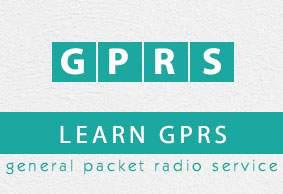GPRS - Data Routing
Data routing or routing of data packets to and fro from a mobile user, is one of the pivot requisites in the GPRS network. The requirement can be divided into two areas:
- Data packet routing
- Mobility management.
Data Packet Routing
The important roles of GGSN involve synergy with the external data network. The GGSN updates the location directory using routing information supplied by the SGSNs about the location of an MS. It routes the external data network protocol packet encapsulated over the GPRS backbone to the SGSN currently serving the MS. It also decapsulates and forwards external data network packets to the appropriate data network and collects charging data that is forwarded to a charging gateway (CG).
There are three important routing schemes:
Mobile-originated message - This path begins at the GPRS mobile device and ends at the host.
Network-initiated message when the MS is in its home network - This path begins at the host and ends at the GPRS mobile device.
Network-initiated message when the MS roams to another GPRS network - This path begins at the host of visited network and ends at the GPRS mobile device.
The GPRS network encapsulates all data network protocols into its own encapsulation protocol called the GPRS tunnelling protocol (GTP). The GTP ensures security in the backbone network and simplifies the routing mechanism and the delivery of data over the GPRS network.
Mobility Management
The operation of the GPRS is partly independent of the GSM network. However, some procedures share the network elements with current GSM functions to increase efficiency and to make optimum use of free GSM resources (such as unallocated time slots).
An MS can be in any of the following three states in the GPRS system. The three-state model is unique to packet radio. GSM uses a two-state model either idle or active.
Active State
Data is transmitted between an MS and the GPRS network only when the MS is in the active state. In the active state, the SGSN knows the cell location of the MS.
Packet transmission to an active MS is initiated by packet paging to notify the MS of an incoming data packet. The data transmission proceeds immediately after packet paging through the channel indicated by the paging message. The purpose of the paging message is to simplify the process of receiving packets. The MS listens to only the paging messages instead of to all the data packets in the downlink channels. This reduces battery usage significantly.
When an MS has a packet to transmit, it must access the uplink channel (i.e., the channel to the packet data network where services reside). The uplink channel is shared by a number of MSs, and its use is allocated by a BSS. The MS requests use of the channel in a random access message. The BSS allocates an unused channel to the MS and sends an access grant message in reply to the random access message.
Standby State
In the standby state, only the routing area of the MS is known. (The routing area can consist of one or more cells within a GSM location area).
When the SGSN sends a packet to an MS that is in the standby state, the MS must be paged. Because the SGSN knows the routing area of the MS, a packet paging message is sent to the routing area. On receiving the packet paging message, the MS relays its cell location to the SGSN to establish the active state.
Idle State
In the idle state, the MS does not have a logical GPRS context activated or any Packet-Switched Public Data Network (PSPDN) addresses allocated. In this state, the MS can receive only those multicast messages that can be received by any GPRS MS. Because the GPRS network infrastructure does not know the location of the MS, it is not possible to send messages to the MS from external data networks.
Routing Updates
When an MS that is in an active or a standby state moves from one routing area to another within the service area of one SGSN, it must perform a routing update. The routing area information in the SGSN is updated, and the success of the procedure is indicated in the response message.
A cell-based routing update procedure is invoked when an active MS enters a new cell. The MS sends a short message containing the identity of the MS and its new location through GPRS channels to its current SGSN. This procedure is used only when the MS is in the active state.
The inter-SGSN routing update is the most complicated routing update. The MS changes from one SGSN area to another, and it must establish a new connection to a new SGSN. This means creating a new logical link context between the MS and the new SGSN and informing the GGSN about the new location of the MS.


